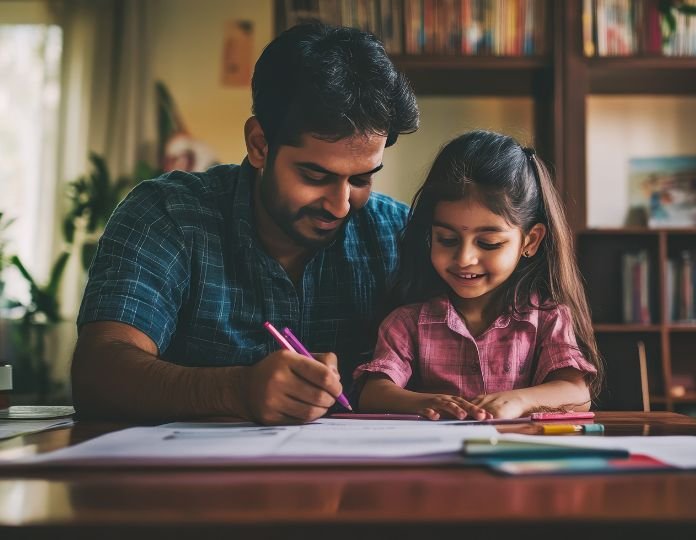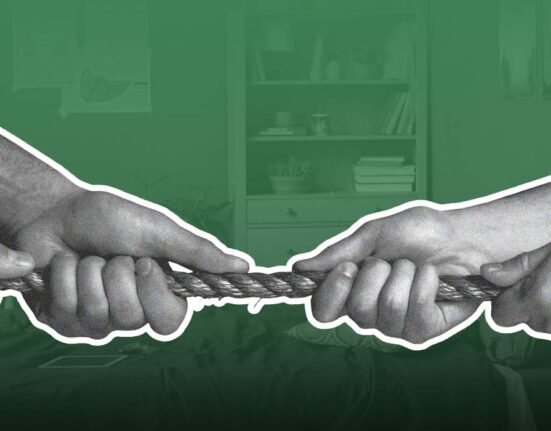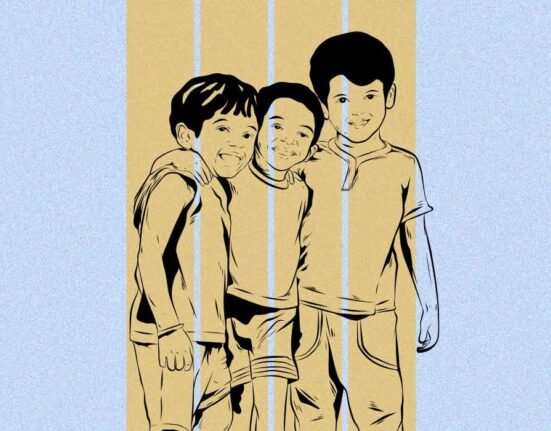Empathy and autonomy are the two most important aspects of children’s growth, development and understanding of themselves as well as the world around them. Children often expect or crave their parents’ approval and understanding, as well as that of the adults around them. A common observation is how children can feel like they’re not heard or fully seen because their choices or actions aren’t always understood or met with empathy by the adults in their lives. This can be parents, siblings, teachers and so on. This article delves deeper into the empathy gaps in adults’ understanding of children’s autonomy.
Read More: Psychologist’s Insights on Empathy and its Psychological Foundations
Factors affecting and leading to empathy gaps
Generational differences, environmental and experiential background, individual personality differences, and socio-cultural factors. In addition to this, neurodivergence and developmental delays play a huge role in how the child and the adult perceive things and the empathy held by them, respectively. It can often also lead to empathy gaps in adults’ understanding of children’s autonomy.
Autonomy And Children’s Perspectives
The foundation of understanding the world is that everyone has their own perspective on viewing the world, people, feelings, and experiences around them. The theory of mind helps explain how an adult’s understanding of their children’s points of view can mutually create understanding gaps. The theory suggests that every individual is able to attribute mental states to others and oneself.
To reinstate it is the understanding that everyone has their own feelings, perceptions, emotions and more that can be different from one’s own feelings and perspectives (Simply Psychology, 2023a). This difference can result in differences of opinion and gaps, especially in child-adult bonds.

For example, when a child finds a subject difficult, he or she may have their own way of learning it that is different from how their parents may have learnt it. This can result in the adult feeling like the child isn’t following the ‘correct’ way of understanding something, leading to differences in opinion and gaps.
The adult feels frustrated while the child can feel a range of emotions from confusion, misunderstanding and more. Here, the interplay of gaps in empathy comes in.
When a parent is unable to give the child that independence because they want the child to behave according to their perspective or have the same understanding and opinion of things as them, it can lead to misunderstandings and a lack of empathy from both ends, which can cause conflicts. The child may not act in the same way that their parents did in the same or different situations.
How choice-making by children can lead to gaps in understanding by adults
The self-determination theory becomes an important factor here. It is where an individual makes their own choices and they feel more in control of themselves (Kendra Cherry, MSEd 2023a). How to dress, how to speak, own sense of fashion, holding different morals than those of the parents and more come in. The same is seen in the context of autonomy in children.
Take the example of parents and the extra-curricular activities of children. Enrolling them on sports, arts, music, and dance can be a fun way to engage your child in activities, especially if it is their choice to learn them. If not, it can lead to feeling like a chore or a burden and lead to gaps in empathy. If a child isn’t exactly allowed or feels safe to make his or her own choices according to his or her needs and liking, it can lead to friction and ultimately empathy gaps in how adults view this choice-making autonomy
Read More: How Does a Child Develop Attachment Style?
Neurodivergence, Disabilities and Adult-Child Empathy Gaps
In addition to ASD, disorders like ADHD, DLD (developmental language disorder, along with other speech and expression disorders, can affect a child’s overall expression. This means that it’s prone to being misunderstood by the world as well as adults. Increasing empathy gaps. In addition to this, deaf and hearing children can also show signs of less empathy, which means increased gaps in empathy by adults, too (Peterson CC, 2016). Although it is safe to say there is still more research being conducted on the same, “Overall, then, results of past research on hearing children appear somewhat mixed.”
Read More: Small Talks: Assessing Social Communication in Neurodivergent Children
Egocentrism for children with ASD (specifically)
Children on the spectrum, like ASD and other related conditions(“Children and Egocentrism,” n.d.), can often show egocentrism. One of the simple yet direct explanations of such gaps is that egocentrism quite literally means the child’s inability to see things from another person’s perspective and viewpoint. A major reason for empathy clashes. This can lead to adults thinking the child is arrogant, doesn’t want to listen or just has a different approach to things that the parent may not always understand, thereby finding it hard to empathise with.
Research also finds that children on the spectrum can have found how “egocentric biases have been found in cognitive, affective, behavioural, and motor domains”, which means empathy as well. An adult can have a hard time understanding a child with ASD due to these, and empathy gaps can increase. (Lavenne-Collot N, Tersiguel M, Dissaux N, 2023) Although if recognised and diagnosed early,it can help build the relationship better and thereby increase empathy and proper support as well.
Read More: What Compatibility Really Means in Neurodiverse Love
Where Guidance Becomes Control By Adults
Scaffolding is an important psychological term that one can use to understand how adult guidance can feel like control for children at times. The zone of proximal development ZPD explains the external support needed by a child to perform better at any task (Saul McLeod, PhD, 2025a). For example, it can be an adult helping a child with a math problem, or even a painting. If at some point the child feels like they have more control than help, it can lead to not feeling understood. Often, this is rooted back to toddlerhood, where guidance is first offered. (Bulgarelli C, Jones EJH, 2023).
Read More: Attachment Therapy Essentials for Mental Health
Attachment Styles and Expression of Emotion
Parental paternalism and empathy are interlinked. It basically means how the thoughts, actions and environment also play a role in a child’s development, as well as the understanding an adult has of it. How a child expresses his emotions is attached to the attachment styles, too. The different kinds of attachment styles also come into play, where a secure attachment style means both the parent or adult and child have mutual trust and understanding(MSEd, 2023g).
This means less anxiety, less avoidance of tough conversations and more openness, which means fewer gaps in empathy. According to a study conducted to understand the relationship between the two, it showed that “The meta-analytic results indicated that children and adolescents with high secure attachment tend to show more empathy than those with low secure attachment”. This means adults who also have secure attachment with their children can exhibit more trust and empathy, which means fewer gaps (Xizheng Xu, Zhiqiang Liu, Shaoying Gong, Yun-peng Wu, 2022).
Read More: Attachment Insecurity Linked to Breadcrumbing in Young Adults in India and Spain
Conclusion
To conclude, one can say that the attachment style between the child and adult, along with the level of autonomy the adult provides the child with respect to offering help or guidance and letting children make their own choices, is key. Understanding that generational differences can lead to these empathy gaps and different opinions, and being patient and curious rather than judgmental can help reduce these gaps from both ends.
FAQs
1. Can secure attachment reduce empathy gaps?
The different kinds of attachment styles also come into play, where a secure attachment style means both the parent or adult and child have mutual trust and understanding(MSEd, 2023g). This means less anxiety, less avoidance of tough conversations and more openness, which means fewer gaps in empathy.
2. How can guidance for children result in misunderstandings?
The zone of proximal development ZPD explains the external support needed by a child to perform better at any task (Saul McLeod, PhD, 2025a). For example, it can be an adult helping a child with a math problem, or even a painting. If at some point the child feels like they have more control than help, it can lead to not feeling understood.
3. How does autonomy help build adult-child bonds better?
Take the example of parents and the extra-curricular activities of children. Enrolling them in sports, arts, music, and dance can be a fun way to engage your children in activities, especially if it is their choice to learn them. If not, it can lead to feeling like a chore or a burden and lead to gaps in empathy. If a child isn’t exactly allowed or feels safe to make his or her own choices according to his or her needs and liking, it can lead to friction and ultimately empathy gaps in how adults view this choice-making autonomy.
4. How can neurodivergence and disabilities interconnect with these empathy gaps?
Children on the spectrum, like ASD and other related conditions(“Children and Egocentrism,” n.d.), can often show egocentrism. In addition to ASD, disorders like ADHD, DLD developmental language disorder along with other speech and expression disorders can affect a child’s overall expression. This means that it’s prone to be misunderstood by the world, as well as adults. Increasing empathy gaps. In addition to this, deaf and hearing children can also show signs of less empathy, which means increased gaps in empathy by adults too (Peterson CC, 2016). Although it is safe to say there is still more research being conducted on the same, “Overall, then, results of past research on hearing children appear somewhat mixed.”
References +
https://www.sciencedirect.com/science/article/abs/pii/S0190740918301889
Bulgarelli C, Jones EJH. The typical and atypical development of empathy: How big is the gap from lab to field? JCPP Adv. 2023 Jan 24;3(1):e12136. doi: 10.1002/jcv2.12136. PMID: 37431324; PMCID: PMC10241450.
Lavenne-Collot N, Tersiguel M, Dissaux N, Degrez C, Bronsard G, Botbol M, Berthoz A. Self/other distinction in adolescents with autism spectrum disorder (ASD) assessed with a double mirror paradigm. PLoS One. 2023 Mar 16;18(3):e0275018. doi: 10.1371/journal.pone.0275018. PMID: 36928493; PMCID: PMC10019668.
1.Wagers KB, Kiel EJ. The influence of parenting and temperament on empathy development in toddlers. J Fam Psychol. 2019 Jun;33(4):391-400. doi: 10.1037/fam0000505. Epub 2019 Feb 7. PMID: 30730181; PMCID: PMC6533135.
Peterson CC. Empathy and Theory of Mind in Deaf and Hearing Children. J Deaf Stud Deaf Educ. 2016 Apr;21(2):141-7. doi: 10.1093/deafed/env058. Epub 2015 Dec 13. PMID: 26668205; PMCID: PMC4886317.
Simply Psychology. (2023, August 28). Theory of Mind Psychology: People thinking. https://www.simplypsychology.org/theory-of-mind.html
Simply Psychology. (2023a, August 28). Theory of Mind in Psychology: People thinking. https://www.simplypsychology.org/theory-of-mind.html
Children and egocentrism. (n.d.). Advice From the Primary Behaviour Support Service, 2. https://educationgateshead.org/wp-content/uploads/2021/09/3535b-JH-Children-And-Egocentris m.pdf
Simply Psychology. (2025a, March 26). Zone of proximal development. https://www.simplypsychology.org/zone-of-proximal-development.html
Pereira LB, Oliva AD. How empathy, perceived parental care, and overprotection indexes are affected by participants’ sex: investigating cultural differences. Curr Psychol. 2023 Jan 13:1-12. doi: 10.1007/s12144-022-04141-4. Epub ahead of print. PMID: 36684456; PMCID: PMC9838331.
MSEd, K. C. (2023g, December 14). 4 types of attachment styles. Verywell Mind. https://www.verywellmind.com/attachment-styles-2795344













Leave feedback about this